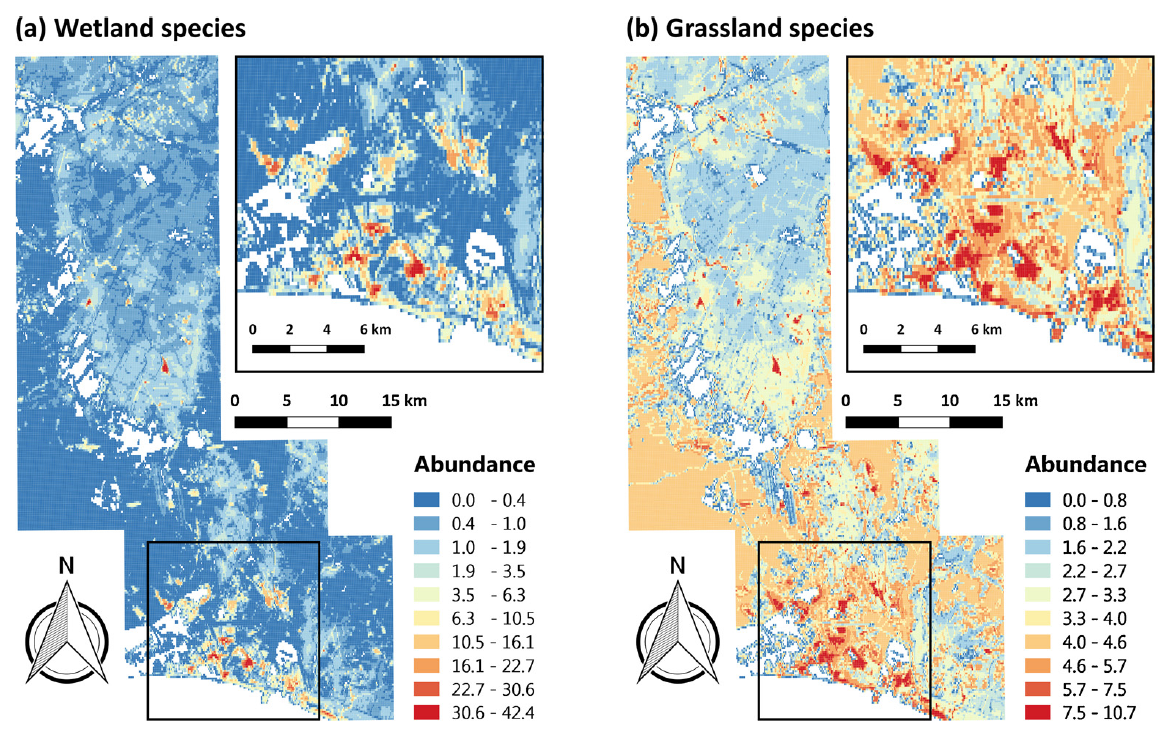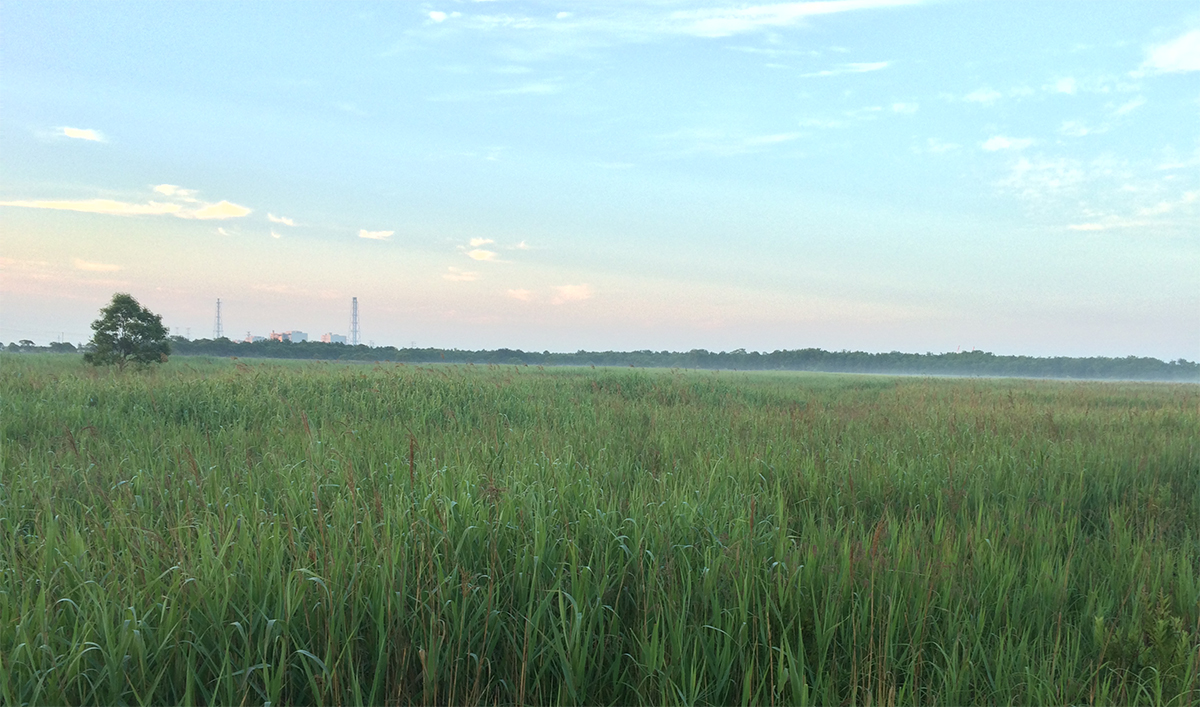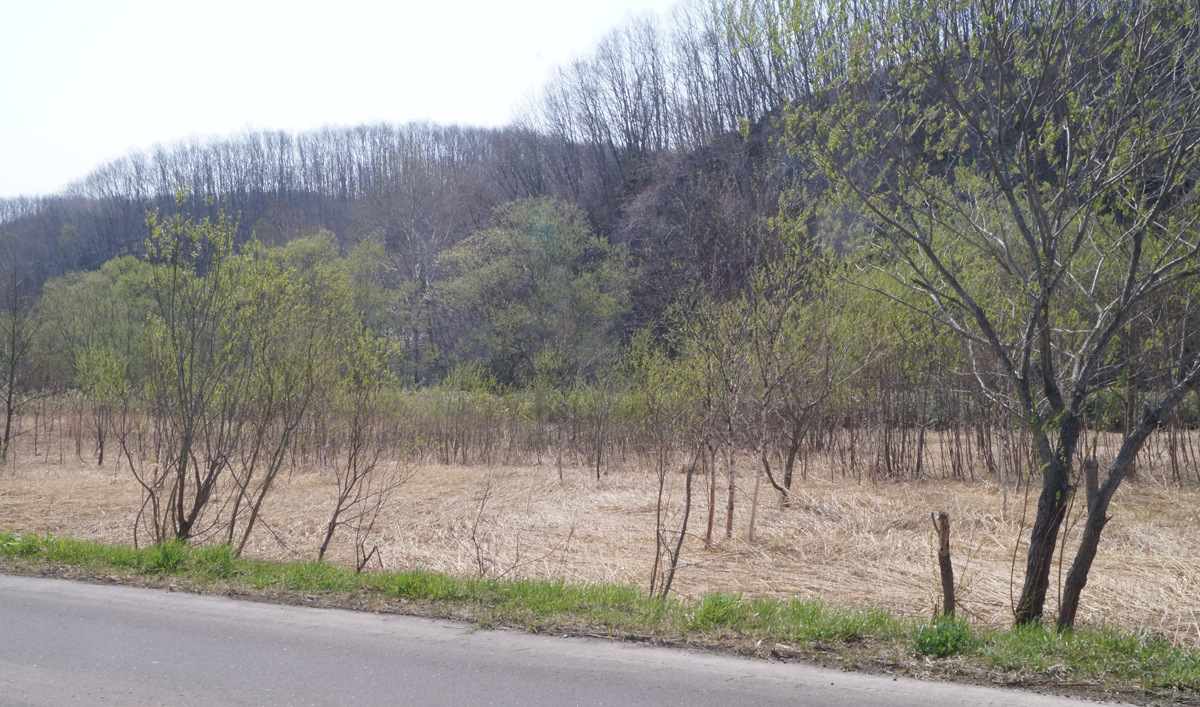Abandoned farmlands enrich bird communities
Research Press Release | August 03, 2018
Joint press release by Forestry and Forest Products Research Institute and Hokkaido University.
Abandoned farmlands hold potential for the preservation of wetland and grassland birds as rehabilitation zones.
Agriculture and conversion of pristine lands into urban or industrial areas have exerted immense pressure on the natural biota due to habitat destruction and fragmentation in industrialized countries around the world. But since the 1900s, farmlands have been increasingly abandoned due to the decline in domestic agriculture and, in some countries, a decline in population. This yields an opportunity for abandoned farmlands to be used as rehabilitation zones for grassland, wetland, and forest animals. However, it has so far remained unclear how valuable for sustaining specific animal communities farmlands, abandoned farmlands, and natural habitats are relative to each other.
Hokkaido University’s Futoshi Nakamura and his collaborators including Yuichi Yamaura of Forestry and Forest Products Research Institute, published in the journal Agriculture, Ecosystems and Environment, studied bird species distribution over an area in central Hokkaido, Japan. The group then correlated abundance and species richness of different bird communities with different degrees of farmland abandonment and the landscape structure. Mapped back onto the landscape of the known composition, this allowed them to evaluate the potential to conserve different bird communities if existing farmlands in a given area were to be abandoned.
The team came to the conclusions that abandoned farmlands, especially when not surrounded by forests, benefit wetland and grassland birds more than other bird communities. However, how well a farmland can be reclaimed depends centrally on the intensity of farmland usage before abandonment. Furthermore, different landscape structure properties affect bird communities in differential ways. For example, a large proportion of newly abandoned farmland within a given area can increase species richness of wetland bird species, favoring rare bird species; on the other hand, farmland abandonment in open areas can increase abundance of wetland species, favoring common species.

Nakamura’s study produced a concrete prediction where different bird groups would be most abundant in the current agricultural landscape. (Hanioka M. et al., Agriculture, Ecosystems and Environment, June 26, 2018)
The effects of landscape structure on animal communities are complex and, as a result, different studies report conflicting results. However, this recent study clearly indicates that abandoned farmlands can be used for the preservation of wetland and grassland fauna. In addition, it untangles some of the factors underlying complicated interactions, thus yielding valuable insights for choosing land plots for specific conservation efforts.

Masashi Hanioka (left) and Futoshi Nakamura (center) of Hokkaido University, and Yuichi Yamaura (right) of Forestry and Forest Products Research Institute.
Original article:
Hanioka M. et al., Assessing the landscape-dependent restoration potential of abandoned farmland using a hierarchical model of bird communities, Agriculture, Ecosystems and Environment, June 26, 2018.
DOI: 10.1016/j.agee.2018.06.014
Funding information:
This study was supported by the Environmental Research and Technology Development Fund (4-1504) of the Ministry of the Environment of Japan, JSPS KAKENHI grants (JP26292074/JP16KK0176 and JP14J05368).
Contacts:
Professor Futoshi Nakamura
Forest Ecosystem Management Group
Graduate School of Agriculture
Hokkaido University
Email: nakaf[at]for.agr.hokudai.ac.jp
Dr. Yuichi Yamaura
Department of Forest Vegetation
Forestry and Forest Products Research Institute (FFPRI)
Email: QandA[at]ffpri.affrc.go.jp
Naoki Namba (Media Officer)
Global Relations Office
Institute for International Collaboration
Hokkaido University
Tel: +81-11-706-2185
Email: pr[at]oia.hokudai.ac.jp


